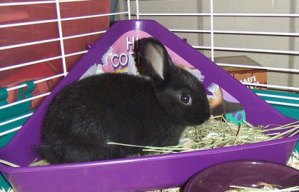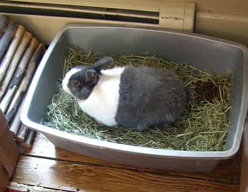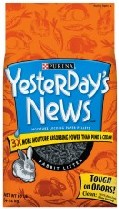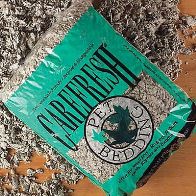

| Home |
Frequently Asked Questions |
Care Routine |
House Rabbit Diet |
Litter
Training |
Did You Know? |
Resources |


Litter training can be as difficult and as long a process as your rabbit decides to make it. Generally, it is easier to train an adult rabbit than it is to train a baby rabbit and it is also generally easier to litter train a rabbit that has been spayed/neutered than it is to litter train one who hasn’t been spayed/neutered. Some rabbits litter train themselves, others require coaching. It all depends on the individual rabbit.
Litter training starts in the cage. After your rabbit has selected a corner that they like to pee in, put the soiled litter along with fresh litter and a handful of hay into the litter box and put the litter box into the corner your rabbit chose. Keep a small amount of soiled litter in the box each time you change it until the rabbit gets the hang of using the litter box. When your rabbit has an accident, clean it up with a mix that is half warm water and half white vinegar. Never punish your rabbit for having an accident. Rabbits do not understand punishment. Praise the rabbit (with petting and healthy treats) for good behavior.
When your rabbit is outside of the cage, make sure that plenty of litter boxes filled with new and soiled litter and some hay are available. If the rabbit continuously uses a spot outside of the boxes for a bathroom, put a box in that spot. When the rabbit gets the hang of using the litter boxes, you can gradually decrease the number of litter boxes and you no longer have to put any soiled litter in the box.
Young rabbits often think that their litter box is a bed and decide to sleep in it. You must convince them of its real purpose.
Corner
litter boxes (sold in the small
animal
section of your local pet store) are best for putting inside
cages.
Litter pans made for cats are best for using
around the house.
Important
Information About Rabbit-Safe Bedding/Litter

